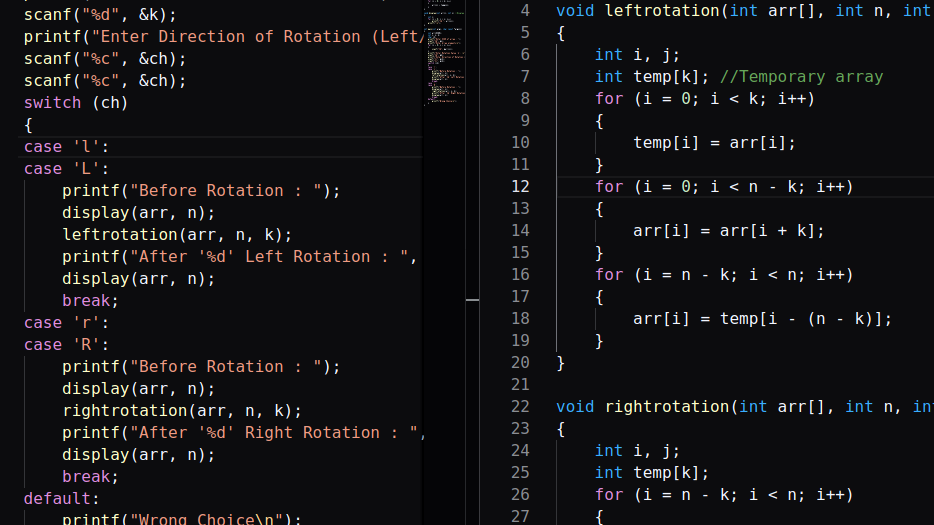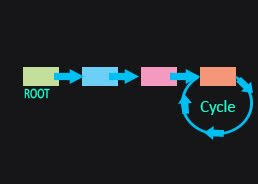Source Code
1 2 3 4 5 6 7 8 9 10 11 12 13 14 15 16 17 18 19 20 21 22 23 24 25 26 27 28 29 30 31 32 33 34 35 36 37 38 39 40 41 42 43 44 45 46 47 48 49 50 51 52 53 54 55 56 57 58 59 60 61 62 63 64 65 66 67 68 69 70 71 72 73 74 75 76 77 78 79 80 81 82 83 84 85 86 | #include <stdio.h> #define SIZE 10000 //Macro to define maximum Array size void leftrotation(int arr[], int n, int k) //Function to perform Left rotation { int i, j; int temp[k]; //Temporary array for (i = 0; i < k; i++) { temp[i] = arr[i]; } for (i = 0; i < n - k; i++) { arr[i] = arr[i + k]; } for (i = n - k; i < n; i++) { arr[i] = temp[i - (n - k)]; } } void rightrotation(int arr[], int n, int k) //Function to perfrom Right rotation { int i, j; int temp[k]; for (i = n - k; i < n; i++) { temp[i - (n - k)] = arr[i]; } for (i = n - 1; i >= k; i--) { arr[i] = arr[i - k]; } for (i = 0; i < k; i++) { arr[i] = temp[i]; } } void display(int arr[], int n) //Display Array Elements { int i; for (i = 0; i < n; i++) printf("%d ", arr[i]); printf("\n"); } int main(int argc, char const *argv[]) { int arr[SIZE]; int i, n, k; char ch; printf("Enter SIZE of array : "); scanf("%d", &n); printf("Enter Array elements\n"); for (i = 0; i < n; i++) { scanf("%d", &arr[i]); } printf("Enter Rotation Value 'k': \n"); scanf("%d", &k); printf("Enter Direction of Rotation (Left/Right : l/r) : "); scanf("%c", &ch); scanf("%c", &ch); switch (ch) { case 'l': case 'L': printf("Before Rotation : "); display(arr, n); leftrotation(arr, n, k); printf("After '%d' Left Rotation : ", k); display(arr, n); break; case 'r': case 'R': printf("Before Rotation : "); display(arr, n); rightrotation(arr, n, k); printf("After '%d' Right Rotation : ", k); display(arr, n); break; default: printf("Wrong Choice\n"); } } |
Output
Enter SIZE of array : 5
Enter Array elements
1 2 3 4 5
Enter Rotation Value 'k':
3
Enter Direction of Rotation (Left/Right : l/r) : r
Before Rotation : 1 2 3 4 5
After '3' Right Rotation : 3 4 5 1 2
Complexity : O(n)





